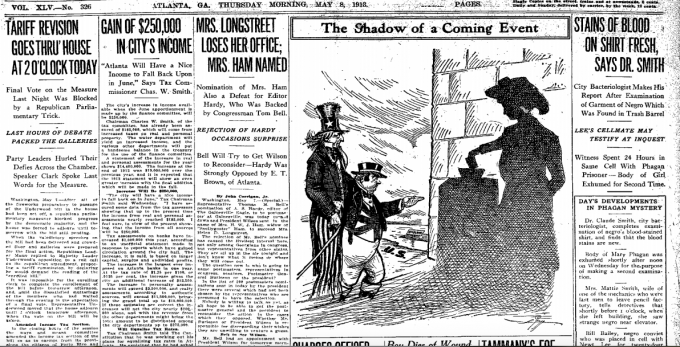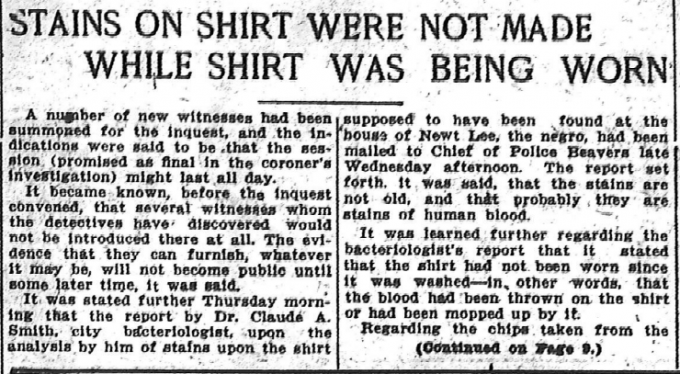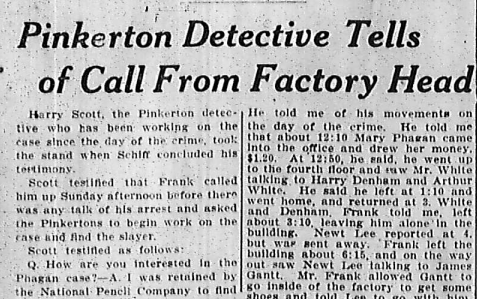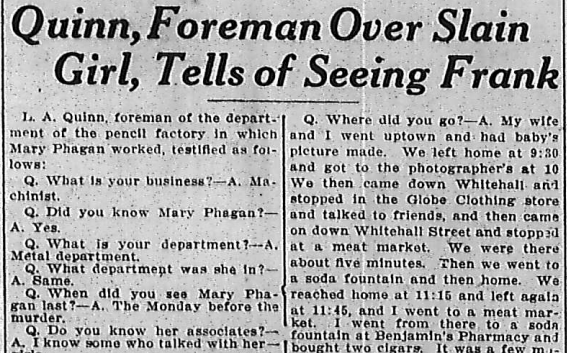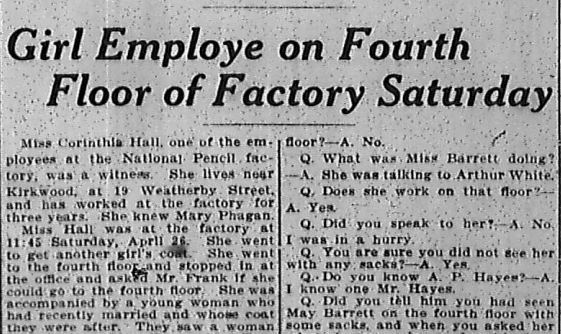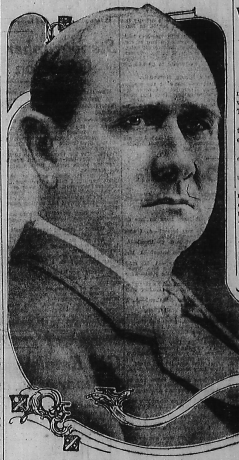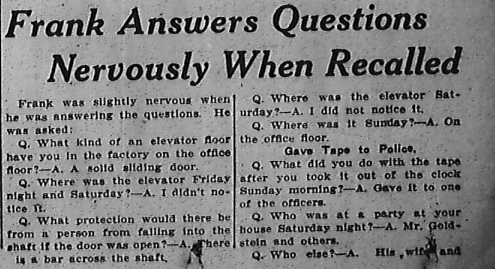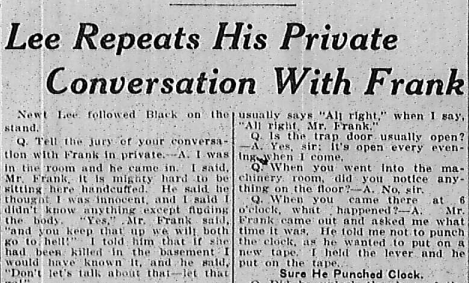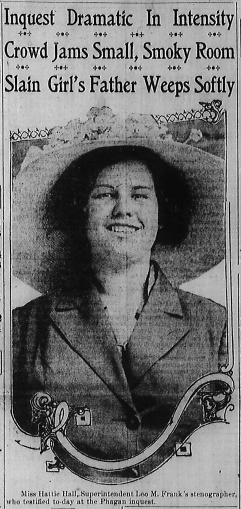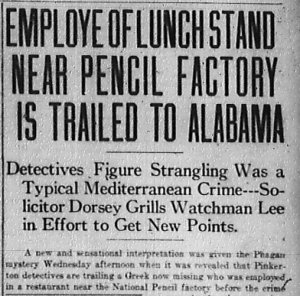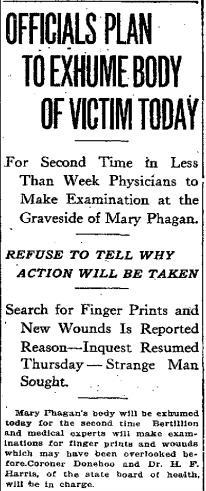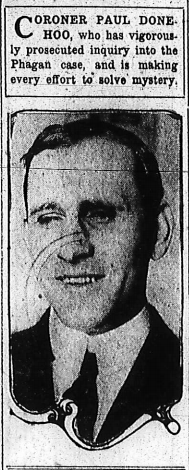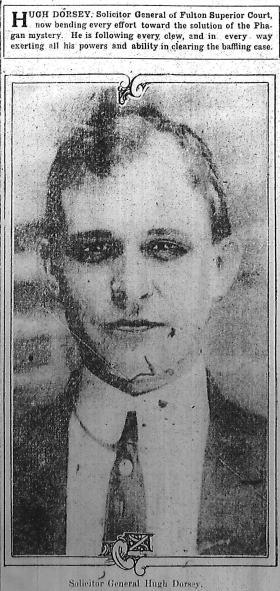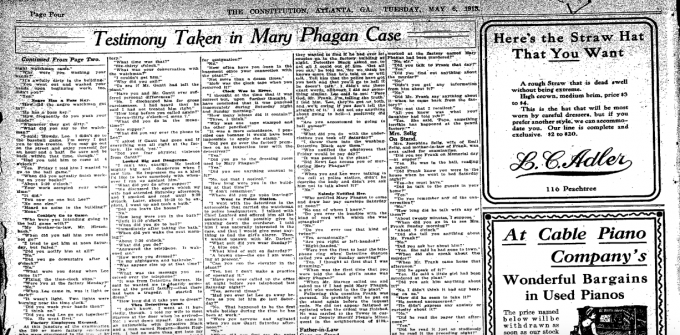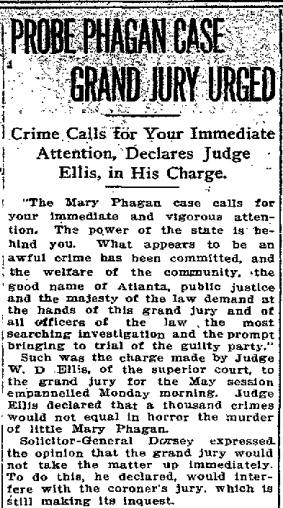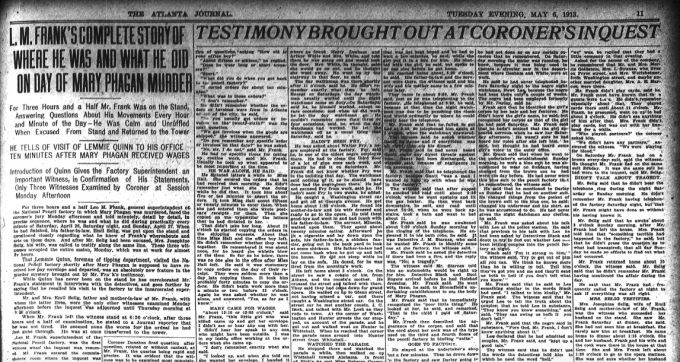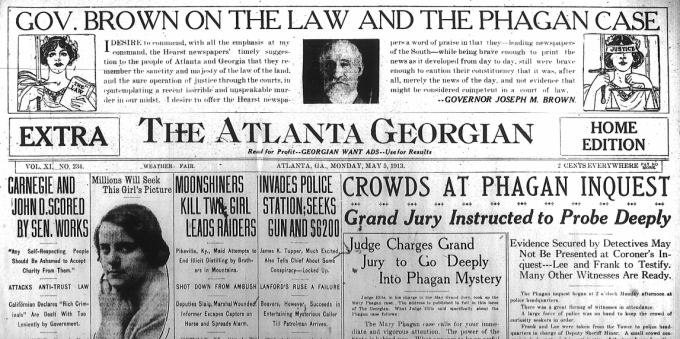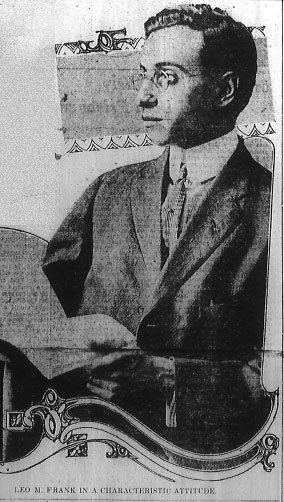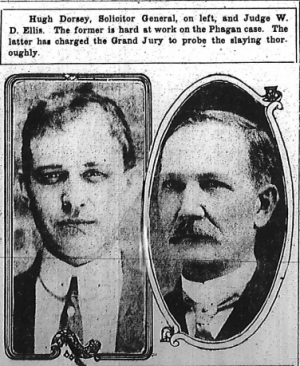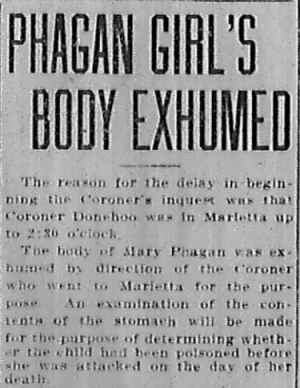Another in our series of new transcriptions of contemporary articles on the Leo Frank case.
Atlanta Constitution
Thursday, May 8th, 1913
City Bacteriologist Makes His Report After Examination of Garment of Negro Which Was Found in Trash Barrel.
LEE’S CELLMATE MAY TESTIFY AT INQUEST
Witness Spent 24 Hours in Same Cell With Phagan Prisoner — Body of Girl Exhumed for Second Time.
DAY’S DEVELOPMENTS IN PHAGAN MYSTERY
Dr. Claude Smith, city bacteriologist, completes examination of negro’s blood-stained shirt, and finds that the blood stains are new.
Body of Mary Phagan was exhumed shortly after noon on Wednesday for the purpose of making a second examination.
Mrs. Mattie Smith, wife of one of the mechanics who were last men to leave pencil factory, tells detectives that shortly before 1 o’clock, when she left the building, she saw strange negro near elevator.
Bill Bailey, negro convict who was placed in cell with Newt Lee for twenty-four hours, now at liberty, and will probably be called upon at inquest today to testify.
Leo Frank will be placed upon the stand again today at 9:30 o’clock, when the coroner’s inquest is resumed.
Solicitor General Hugh Dorsey holds a long conference in cell with Newt Lee, but declines to tell what passed.
Detectives announce they are searching for a Greek, who is now believed to be in Alabama.
Chief Lanford declares that somebody is blocking Phagan investigation, silencing witnesses, and “planting” evidence.
The report of Dr. Claude A. Smith’s analysis of the bloodstains on the shirt found in the home of Newt Lee, who is held in connection with the Mary Phagan murder, has been submitted to the detective department. It reveals that the stains were caused by human blood, not more than a month old. Continue Reading →

